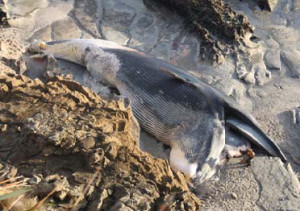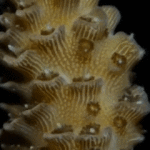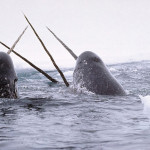I recently came across an article by Andrew Baxter of the Nelson/Marlborough Conservancy of New Zealand’s Department of Conservation published in the Bycatch Communication Network Newsletter. He kindly allowed me to reprint the article here for our readers with permission from BCNN’s publisher.
By Andrew Baxter, Nelson/Marlborough Conservancy, Department of Conservation, New Zealand Originally published in BCNN Issue 13, Aug-Sept 2009, pgs. 5-6

There was a very large dorsal wound, with shark bites evident along its margins. The tail area was also badly damaged. More sinister, however, was the discovery of rope within the whale’s gut by two people from Wellington who visited the site several days later. By this time the whale had begun to break up, revealing two separate lengths of rope – over 2m extracted from the oesophagus and a further 1.8m (and an unknown quantity of matted fibrous rope) from lower in the gut. The three-strand polyamide rope is the sort typically used for hawsers or mooring ropes.
Due to the advanced state of decomposition and disintegration of the carcass by the time the rope was discovered, and the logistical difficulties involved, it was decided not to undertake a post-mortem. The exact cause of the blue whale’s death, therefore, remains uncertain.
The primary cause of the large dorsal wound is unknown, but possibilities include an eruption of body organs due to decomposition, or collision with a vessel (before or after death). The shark predation observed along the margins of the dorsal wound could have happened prior to or after death depending on the cause of the initial trauma. Mutilation of the tail area may have been the result of vessel collision or possibly entanglement.

Irrespective of the uncertainties surrounding the precise cause of death and the role of the rope in the blue whale’s demise, the incident illustrates the threat of marine debris in the ocean – a threat not just to seabirds, turtles and smaller marine mammals, but also to our largest marine inhabitants.






One Reply to “Rope found in Blue Whale’s Stomach”
Comments are closed.